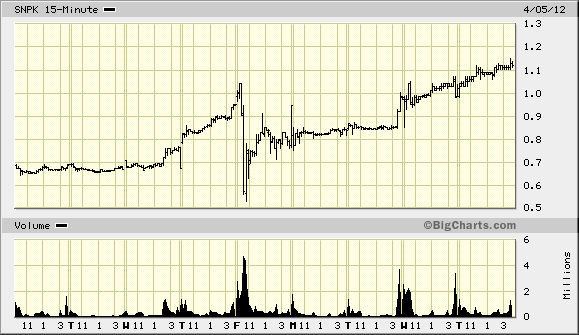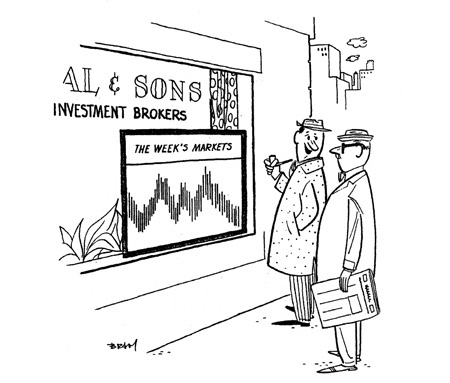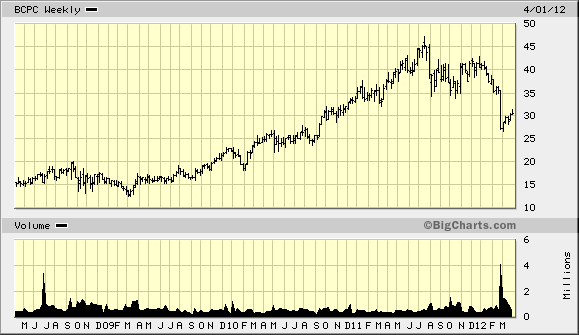
Robert L. Rodriquez, CFA and CEO of First Pacific Advisors in a speech to Institute for Private Investors on Feb. 15, 2012: “I met Charlie Munger in my USC graduate school investment class and had the opportunity to ask him this important question, “If I could do one thing to make myself a better investment professional, what would it be? He answered, “Read history! Read History!” This was among the best pieces of advice I ever received.”
The full speech at Gurufocus is here (scroll down for the direct link): http://www.gurufocus.com/news/162873/caution-danger-ahead–r-rodriguezfpa
Value-Line Analysis of Pepsi
Our last analysis of a Value-Line Tear Sheet was Balchem (BCPC): http://wp.me/p1PgpH-CY
Now lets look at Pepsi Co., Inc. (PEP): Pepsi_VL
Without glancing at price (easy to do when flipping through the Value-Line at the library or open the digital PDF while looking away from your computer, scroll down and then focus on the numbers) I see Return on total Capital (ROTC) of 30% to 16%, now in the high teens. Return on Equity has ranged 42% to 29%. The 80% higher ROE than ROTC means debt is helping boost returns significantly. Debt is useful as long as its doesn’t impair the company under stressful conditions. The ten-year history of 16 to 25% ROTC shows that this is probably a franchise. Good. Value will be in the growth.
As a review for beginners from Value-Line:
Return on Shareholder Equity, meanwhile, reveals how much has been earned on just the stockholder equity. Value Line calculates this by dividing net profits by shareholder equity, which includes both common and preferred equity. Again, higher percentages are generally better.
Neither of these measures can be used in exclusion, however. They are best used as a starting point or as a comparison tool. Note that comparisons between companies in the same industry will provide more insight than comparisons between companies in different industries. Indeed, because of the differences between industry fundamentals, some industries will have a preponderance of low scores while others will have large numbers of companies with high scores. That said, using these two measures as a first screen can help to quickly limit the number of companies under review and will, generally, direct investors toward higher quality entities.
It is also interesting to compare these two measures for the same companies, which can provide insights into how well companies are making use of their debt. For example, if Return on Total Capital is going up but Return on Shareholders Equity isn’t following along, or, worse is static or falling, additional debt financing isn’t benefiting shareholders.
Another statistic to consider along with these two is Retained to Common Equity, which is colloquially referred to as the “plowback ratio”. Value Line calculates this measure by dividing net income less all dividends (common and preferred) by shareholder’s equity. It measures the extent to which a company has internally generated resources to invest in the company’s future growth. A high percentage here, coupled with an increasing Book Value, is a clear signs that management is increasing the value of its business. This can help validate both the above measures and provide a degree of reassurance that a business is self-sustaining. Like the other two measures, this data point is available in the Statistical Array of each Value Line report.
Back to the PEP Value-Line
Operating margins 20% and net profit margins at 10% with a slight trend down. This may be good or bad depending if margins will stabilize or go up. Even if the margins go down even more–if the company is earning more than its cost of capital and the market price is more pessimistic–then the company could still be a good investment, depending upon price. Just note the slight decline in margins, the business is under temporary stress? Higher capex, higher costs that are not passed through, etc. We don’t know the details of the story, just a question we need to answer with further research.
Sales per share have been rising 8% to 10% for the past decade, and sales did not drop in 2009, so this company has a stable product with low cyclicality.
Book value shows a steady 6% to 7% increase. 40% to 45% of their earnings are being paid out to shareholders in the form of dividends, share count is declining very slightly. Good, the company is a slow grower and is returning excess capital to shareholders. The danger might be if management leveraged the company too much.
A glance at the balance sheet shows $26.8 billion in long-term debt; $5.5 billion in net pension obligations and 1.6 billion in cap. leases then subtract 3 billion in cash so we have 30.9 billion or $31 billion in net debt (round up) to add to the market cap to reach our Enterprise Value (Remember we are buying the whole company including its debt). With 1.55 billion shares that is $31 debt/1.55 shares or $20 of net debt per share.
I see about $6 of “Cash Flow” and about $2 of capex for $4 of FCF per share. Note the jump in Capex from 2009 to 2010-what happened? With no growth I certainly would pay $40 to $45 for about a 10% return if I was confident of the company’s franchise. All metrics have grown 7% to 10% over the past ten years. Can that growth continue? This company seems like and inflation pass-through–Sales and profits will rise at least as fast as nominal inflation on average. Good. So if this company could grow at 5% to 6% and I was confident of that growth I would pay $65 to $80 per share for that cash flow, but my confidence level for that future growth had better be high.
Anyway, I have about $40 no growth value for the company but more like $65 to $80 for the business if I assume 5% to 6% growth–like buying a bond. My alternatives are 3% for 20 year US Bonds.
Now to the market price, I see we have a $66 share price as of April 4, 2012 so the market cap is 1.55 billion shares x $66 or about 102 billion but for simplicity–$100 billion then add the 31 billion in net debt for a total of $130 billion for the business (133 billion if we wish to be more precise) for an Enterprise value of $84 to $85 per share.
My range is $65 to $80 (aggressive assumptions?), so the company is out of my range by $5 to $20 or a 5% to 25% swing in price), but a swing of 10% to 15% in price (thank you index selling!) could make this an attractive investment.
Now I do a quick double-check. I have about $85 per share in enterprise value divided into $4 of FCF for an earnings yield of 4.7%. Growth has averaged 9% for the past ten years and I will knock that down to 4% to 6% to be conservative, then add that to 4.7% earnings yield–over 45% of that earnings yield is being paid out to me in the form of a 3.5% dividend yield based on the current market price. Now I have a range of return 8.7% to 10.7%. Not bad assuming I can have confidence in the franchise which 80 years of history leads me to believe I can. However, I do need to note the issues I brought up like the increase in capex from 2009 to 2010, insider activity and the terms of the company’s debt (ALWAYS check terms of debt and READ THE PROXY).
The company trades at a market multiple but is an above average company. If I HAD to own stocks, I would own PEP because you are getting an above average company for the market price. However, I (not you perhaps) seek a 12% to 15% return. A $8 to $15 dollar drop (certainly possible) could make this very attractive to me. Conversely I could sell a 2013 or 2014 put at a 55 strike for the amount of shares I would wish to own (I want a 20 to 25 company portfolio of “cash gushers” to supplement my spin-off asset investments).
I place this in the #2 work-on pile. Remember not to fool yourself. If I drove up to Pepsi’s headquarters in Purchase, NY (20 minutes from where I live) and spent two years studying the company, I don’t think I would understand the business better than reading the last 5 annual reports and proxies. PEP is a world-wide conglomerate operating in 100 countries with 100s of different products in major food categories. I am looking at this more as a financial machine. Since the company is selling consumer products (branded food) I know the operational risks are lower than a cyclical steel company. I will look for bombs on the balance sheet or any tricky accounting. If I can’t understand the financials, then pass. Time spent 2 minutes.
Miller Industries, Inc. (MLR)
Anyone want to take a crack at MLR: MLR_VL? I will post your analysis.












